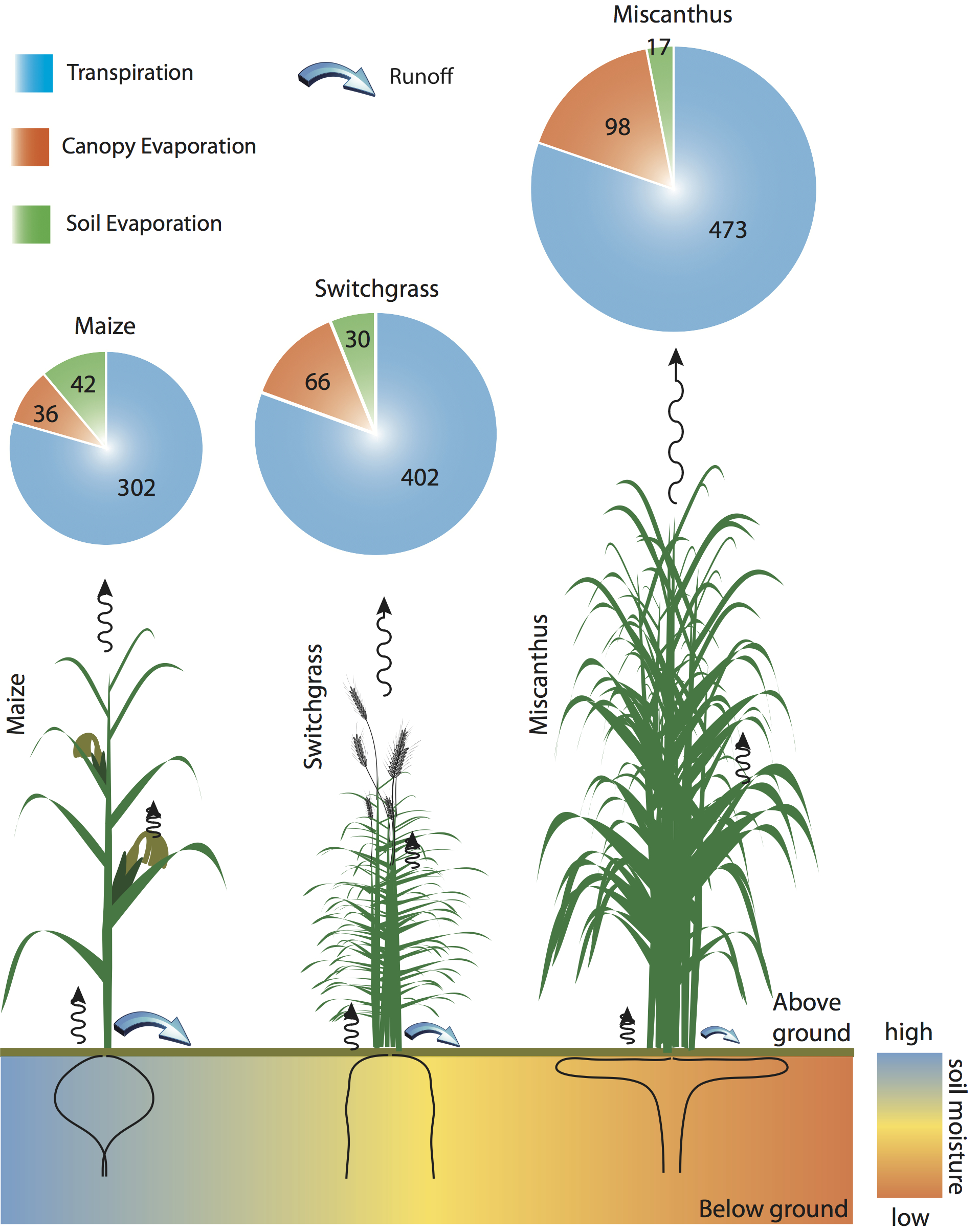Implication for the hydrologic cycle under climate change due to the expansion of bioenergy crops in the Midwestern United States

Land use conversion from current maize to lignocellulosic bieoenergy crops associated with vegetation acclimation under climate change will have significant impacts on hydrologic cycle. Pie charts represent total water use [mm] of three crops during the growing season in 2005.
Motivation:
Lignocellulosic bioenergy is being considered as a promising alternative to fossil fuel. It is likely that a large portion of agricultural landscape, in the Midwestern United States will be converted for cultivation of bioenergy crops (miscanthus and switchgrass) for meeting future bioenergy demands. The high biomass productivity of bioenergy crops in a longer growing season linked tightly to water use highlight the potential for significant impact on the hydrologic cycle. This issue will be further exacerbated by the uncertainty in the response of the vegetation under elevated CO2 and air temperature increase.
Objective:
Evaluate potential impacts of bioenergy-based land use changes on the hydrologic cycle in the Midwestern US under climate change projections.
Approach:
A vertically resolved model of canopy biophysical processes that captures vegetation acclimation response to climate change was used to capture the ecohydrological responses of crops under various climate conditions. Water use of miscanthus and switchgrass was compared with that of maize.
Significant results:
We found that lignocellulosic bioenergy crops utilize more water than maize per unit area. For extensive areal alteration, the impact of bioenergy crops on hydrologic cycle is quite significant and needs to be weighed with other environmental, energy, and economic benefits.
Recognition:
National Science Foundation Press Release 11-176
Funding:
National Science Foundation,
Vietnam Education Foundation
Key Publications:
1. Le P. V. V., Kumar P., Drewry D. T. (2011) Implications for the hydrologic cycle under climate change due to the expansion of bioenergy crops in the Midwestern United States. Proceedings of the National Academy of Sciences of the United States of America , 108, 15085–15090. - link to article
2. Drewry D.T., Kumar P., Long S.P., Bernacchi C.J., Liang X.-Z. & Sivapalan M. (2010a) Ecohydrological responses of dense canopies to environmental variability: 1. Interplay between vertical structure and photosynthetic pathway.
Journal of Geophysical Research 115, G04022. - link to article
3. Drewry D.T., Kumar P., Long S.P., Bernacchi C.J., Liang X.-Z. & Sivapalan M. (2010b) Ecohydrological responses of dense canopies to environmental variability: 2. Role of acclimation under elevated CO2.
Journal of Geophysical Research 115, G04023 - link to article